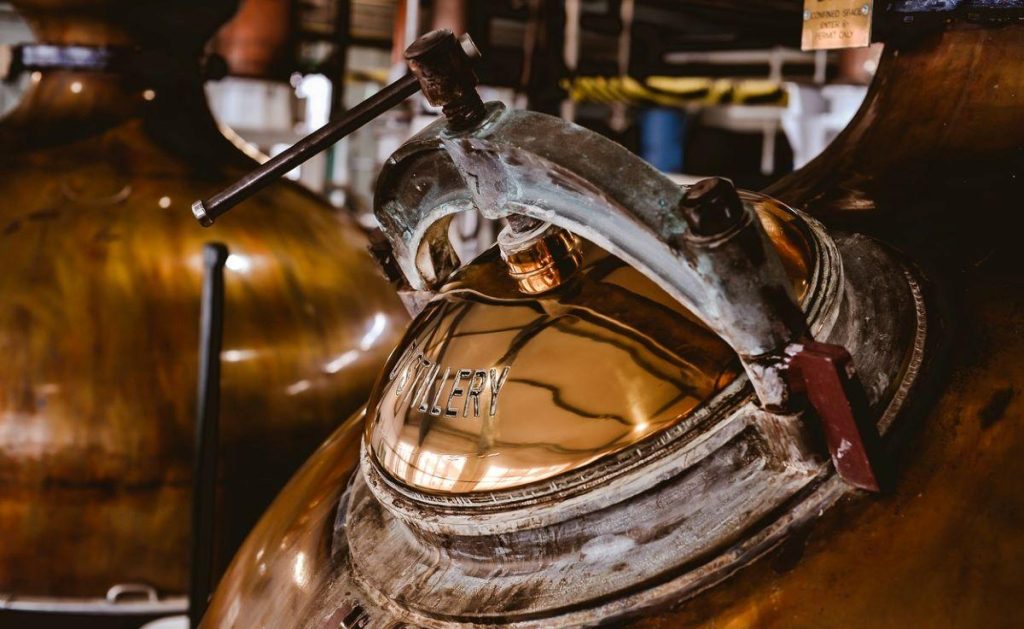5x What? What counts as a distillation cycle?

By now you likely know the basics of the distillation cycle, process and the stages of distillation but some people still get confused about what people mean when they talk about double distilled, triple distilled (or even 18 times distilled!) spirits.
Whether you’re using a pot still or a plated column it’s pretty easy to count the number of separation steps in the equipment. A single pot still runs and each plate in a reflux column counts as a separation step in case you were wondering.
Packed columns can have a lot of variation so it’s more difficult to consistently calculate the number of equivalent separation steps. So if you’re using a still that has four plates attached to it does that mean that your spirits are five times distilled (one pot and four plates)?

(Tenth Ward distilling Co.) Photo by Matt Sprague
Not according to the TTB’s updated guidance in April of 2020:
“5.42(6) Distilled spirits may not be labeled as “double distilled” or “triple distilled” or any similar term unless it is a truthful statement of fact. For purposes of this paragraph only, a distillation means a single run through a pot still or a single run through a column of a column (reflux) still. The number of distillations may be understated but may not be overstated.” – TTB
This appears pretty straightforward, in order to legally claim something is distilled multiple times you need to run it through your equipment multiple times. Bear in mind that we are not lawyers, do not claim to be lawyers, and don’t even play lawyers on TV. Always seek licensed legal counsel to make sure you are in compliance with all labeling and regulatory requirements.
So even though several separation steps can happen in a single run using a plated column it doesn’t count as however many times distilled according to the TTB. One of the practical reasons for that is that it’s common practice to do cuts when you’re pot stilling but pretty impractical to make them at each plate level. This means that even though you’re going through several separation stages in a column the distillation process as a whole only completes one full cycle.
Separating the heads, hearts, and tails isn’t only another separation step, it’s where a big part of the craft of distilling comes into play. You may be going for the heart of the hearts, you may want to capture some of the fruit notes in your heads, or there may be some leftover flavors at the end of your run that adds to your final product. Choosing where to make your cuts and what makes the best spirit for you is a big part of the process and one of the most important stages of distillation.
Making spirits using a plated column does have a lot of advantages over pot stilling. Running higher reflux ratios and using multiple plates will help you achieve better separation and allow you to have a more efficient separation per run. This means less energy input and less waste for your process, which means lower costs in the long run.
The cost of making spirits increases dramatically with the cost of heating the kettle multiple times, the cost of materials that get thrown out when making cuts, and the increased labor costs for having personnel on-site for running multiple batches where one or two would suffice with the proper equipment.
For example, when you’re making vodka in order to achieve higher purities and consistently high ABV over the course of a run it’s important to have enough separation steps to keep your purity up and prevent smearing.
There’s a lot that goes into the distillation cycle and it can be confusing when you’re researching new practices and trying to do something experimental. We’re more than happy to help and discuss your needs and what you’ll need to help you make the best spirits possible.
Give us a call at 561-845-8009 with any questions you may have, we are happy to help!